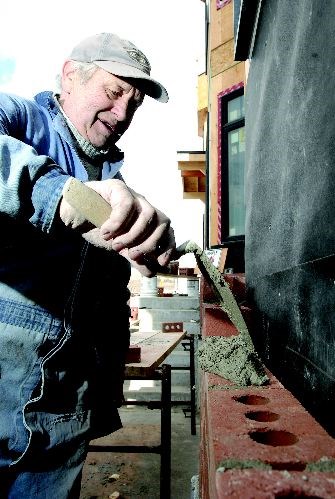Fred Lienert has been laying bricks from East Germany to Prince George for 61 years and he is finally hanging up his trowel at the end of this year.
Growing up in East Germany, his father worked as a Uranium miner, and he's always known he didn't want to become a miner. Instead he looked for a profession that would keep him above ground.
"[I like laying brick], because it's always in fresh air and I like the environment. I've liked it since I was a kid," said Lienert.
The timing of his decision meant that he would become part of the post-war rebuilding history of the European country.
"Everything in Germany had to be rebuilt after the war and the government needed brick layers," he said. "The government paid 90 brick layers and there are only a few of us left."
Lienert left Germany for Canada in 1958 because he wanted to see the world and he settled in Prince George.
He calls the first few years he spent in Canada a "second apprenticeship" because his English wasn't very strong and he lost job opportunities and money as a result, until he partnered with Hans Maack and began to work on bigger construction contracts. They were business partners for 40 years.
At 74, Lienert can still be found laying bricks five days a week, sometimes even six days. "Lately, I've been working too much," he said.
It's estimated that throughout his Canadian career, he has laid well over two million bricks. Before he immigrated to Canada, he estimates he laid even more than two million.
"[In Germany] we got paid by the cubic metre. There are 400 bricks in a cubic metre and we would lay three cubic metres a day. That's 1,200 bricks a day," said Lienert.
Lienert said he used 11,000 bricks in the house that he built for his wife and two children.
But brick laying is a dying profession, Lienert said, explaining unionized brick layers can afford to take on apprentices but non-unionized brick layers can't afford to accept the liability of someone else's mistake.
Once he retires, Lienert said, he's is looking forward to spending more time at his cabin on the lake and around the house he built, but he also knows that he is going to miss the brick and mortar.



